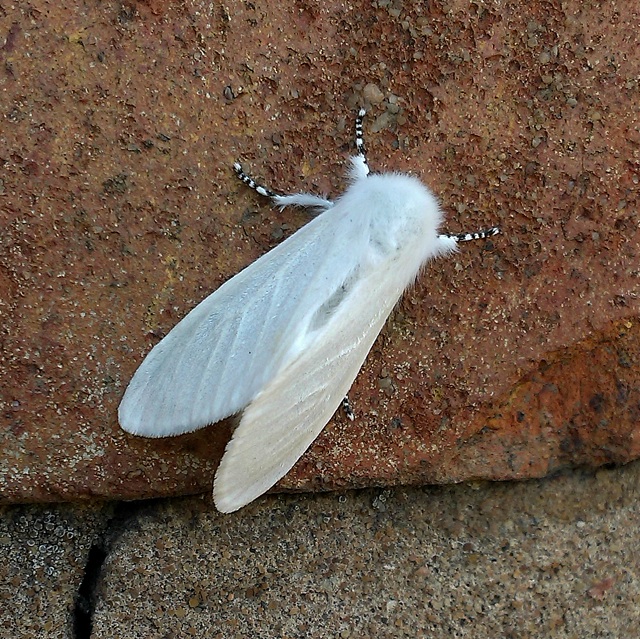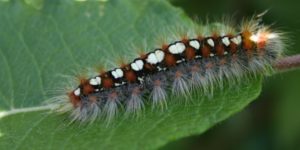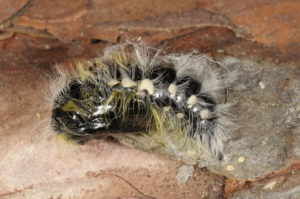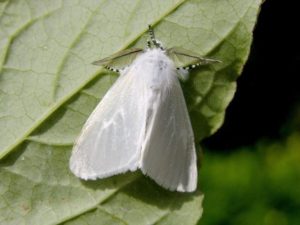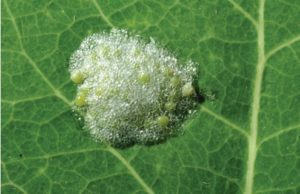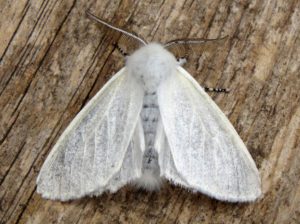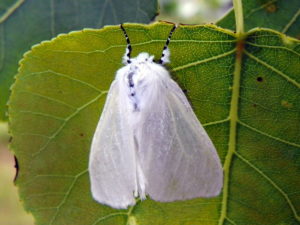White Satin Moth (Leucoma salicis)
The white satin moth of the Erebidae family gets its name because of its silvery-white body and satiny wings. It has a widespread distribution spreading throughout Europe, and parts of Asia, up to Japan. In North America it was introduced in the 1920s, and eventually it populated in most counties of the U.S.
Birdguides-cdn.com
Scientific Classification
- Family: Erebidae
- Genus: Leucoma
- Scientific Name: Leucoma salicis
Description and Identification
Caterpillar
The larva, 4.4 inches long, varies in color from grayish-brown to black. They have milky-white or yellowish-brown circles on their back in between pairs of reddish-brown circles arranged in uniform rows. Reddish-brown hair-tufts stick out straight from the sides and back.
Adult Moth
Sexual Dimorphism: Present.
The females are larger than males.
Color and Appearance
They are black, but the white hair and scales covering their body give them a silvery-white furry look. When opened and closed, the wings have an all-white coloration and satin-like texture.
Average wingspan: 37–50 mm
Flight pattern: Not recorded
Season: Summer
Quick Facts
| Distribution | Europe; the Palearctic to Japan |
| Habitat | Hedgerows, gardens, forests, and parks |
| Lifespan of Adults | 2 months |
| Host Plants | Poplar, cottonwood, aspen, willow, oak, and crabapple |
| Adult Diet | Does not feed |
Scientific Classification
- Family: Erebidae
- Genus: Leucoma
- Scientific Name: Leucoma salicis

